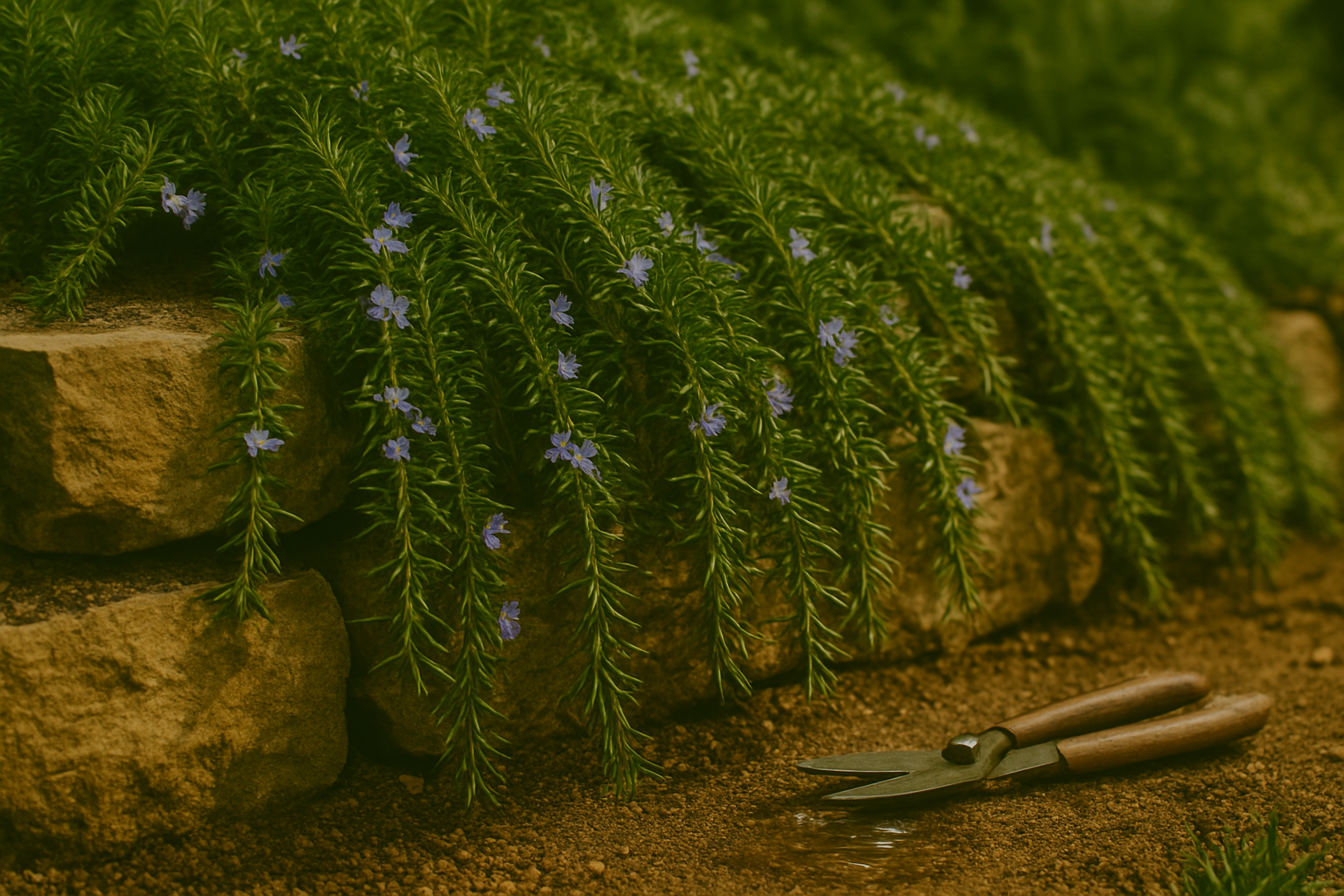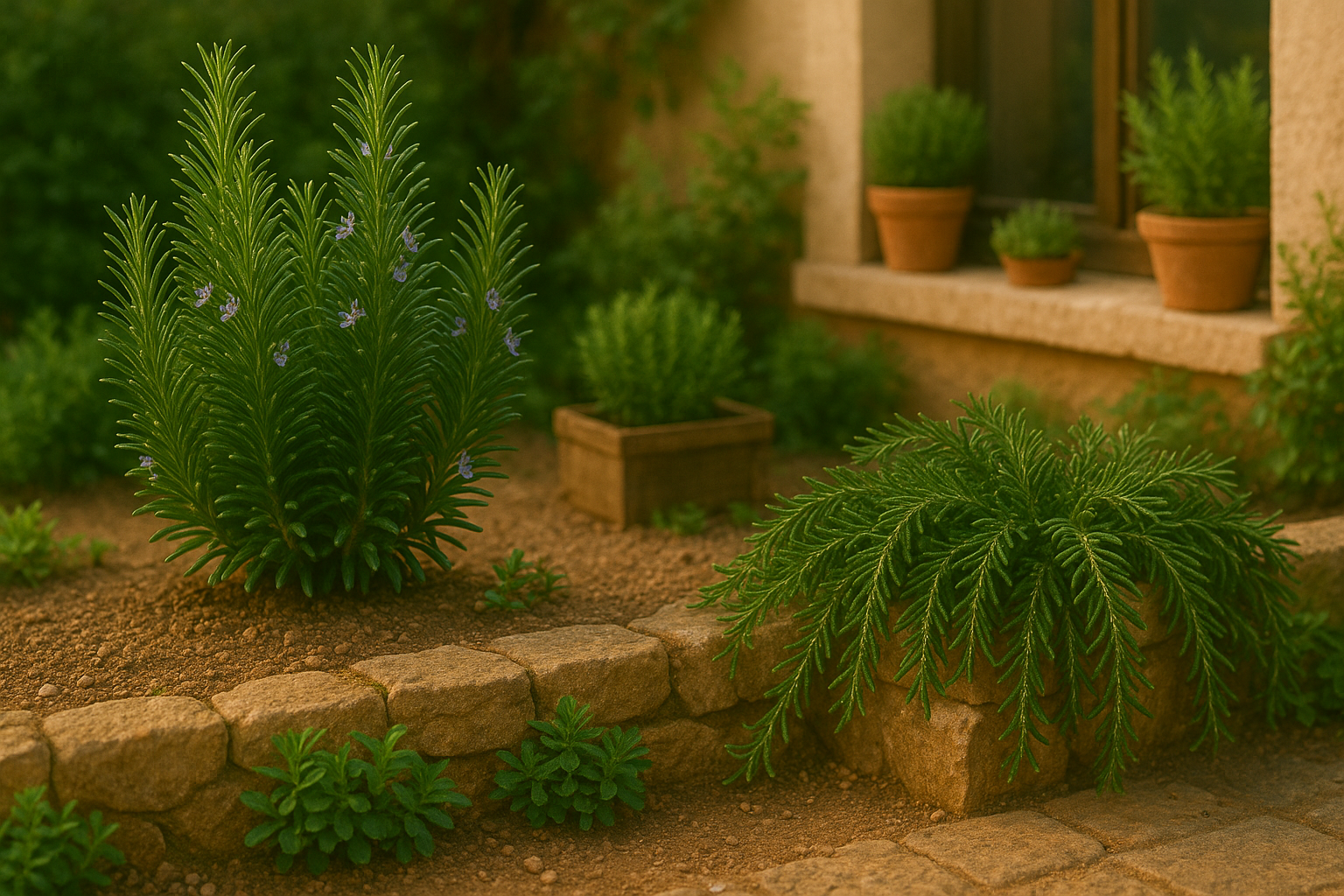Introduction
The best rosemary varieties can transform your home garden, whether you have sprawling outdoor beds or a sunny windowsill. Rosemary is a favorite herb for many home gardeners thanks to its fragrant leaves, easy care, and ability to thrive in a range of garden spaces. From compact varieties perfect for containers to hardier types that withstand chilly climates, there’s a rosemary plant for almost every need. In this post, you’ll discover top picks for the best rosemary varieties, along with practical tips to help you choose the right one for your garden. Let’s dive into what makes these varieties stand out!
“`html
Upright Rosemary Varieties

Upright rosemary varieties are prized for their tall, bushy growth habits, often reaching heights of 3 to 6 feet, making them stand out compared to sprawling or trailing types. These sturdy, vertical plants are excellent for creating focal points in herb gardens, using as informal hedges, or lining walkways with their aromatic foliage.
Among the most popular cultivars are:
- Tuscan Blue, known for its deep green needles and abundant blue flowers,
- Spice Island, with a rich fragrance and sturdy stems beloved by chefs, and
- Gorizia, recognized for its especially wide leaves and suitability in both culinary and ornamental settings.
Upright rosemary is celebrated for its versatility; snip sprigs for flavoring roasted meats and potatoes, infuse oils and vinegars, or decorate tables and bouquets with its evergreen branches. In the landscape, upright varieties can be clipped into tidy shapes for a structured hedge or allowed to grow loosely as a striking specimen shrub.
For best results, plant upright rosemary in a sunny spot with well-drained soil—raised beds or amended sandy soils are ideal. These Mediterranean natives thrive in pots as well, especially if you live in a colder climate and need to bring them indoors for winter protection.
Remember not to overwater, as rosemary dislikes soggy roots. Prune lightly after flowering to promote a dense, healthy shape and prevent leggy growth. With minimal care, upright rosemary offers year-round beauty and bounty in both the kitchen and garden.
“`
Trailing and Creeping Rosemary

Trailing or creeping rosemary varieties add a graceful, flowing touch to gardens and containers with their distinctive growth patterns. Unlike upright rosemary, these types—such as ‘Prostratus’ and ‘Huntington Carpet’—are known for their low, spreading form.
Their stems trail elegantly over walls, spill from hanging baskets, or form dense mats as ground cover, making them supremely versatile. ‘Prostratus’ is particularly popular, often used to cover slopes and banks because it roots wherever its stems touch the soil, helping with erosion control and weed suppression. ‘Huntington Carpet’ offers a similar effect, with dense, finely textured foliage and pale blue flowers that add soft color throughout the year.
These varieties thrive in well-drained soil and full sun, but they’re also adaptable to rocky or sandy spots where few plants flourish. For containers, choose a pot with drainage holes and allow the soil to dry between waterings, as creeping rosemary dislikes soggy roots.
Prune lightly after flowering to maintain shape and remove any tangled or woody stems, encouraging fresh new growth. Their aromatic leaves have culinary uses just like upright rosemary, and placing a container near a doorway lets you brush against the fragrant foliage every time you pass.
For maximum impact, consider pairing them with drought-tolerant companions like trailing thyme or ornamental grasses, creating a low-maintenance, Mediterranean-inspired display that’s both beautiful and easy to care for.
Cold-Hardy Rosemary Varieties
For gardeners in cooler regions, choosing cold-hardy rosemary varieties is essential to enjoy this aromatic herb year-round. Many standard rosemary types often struggle or die back when winter temperatures drop below 20°F, so seeking out tough varieties is key.
Two standout options are ‘Arp’ and ‘Hill Hardy,’ both renowned for surviving colder climates where regular rosemary fails. ‘Arp’ is particularly impressive, with reports of survival in temperatures as low as 10°F and even lower with protection. ‘Hill Hardy,’ sometimes called ‘Madeline Hill,’ boasts similar resilience, thriving where other cultivars succumb to frost. Both offer classic rosemary flavor and upright growth, making them practical and attractive for garden beds or pots.
Unlike standard rosemary—which often requires bringing indoors or heavy mulching—these varieties can handle light freezes outside, especially if planted in well-drained soil and a sheltered spot. For gardeners in very cold zones (USDA zone 6 and colder), consider mulching heavily around the base, using row covers, or even growing rosemary in containers to transfer indoors during deep winter.
With these robust varieties and a few overwintering strategies, even northern gardeners can cultivate thriving rosemary through the cold months.
Giant and Unique Rosemary Types
If you’re looking to add something extraordinary to your herb garden, giant and specialty rosemary varieties like ‘Gorizia’ are sure to impress. Unlike common rosemary, ‘Gorizia’ stands out with its wide, elongated leaves—almost twice the size of typical types—making it a visual showstopper.
This robust variety can grow up to five feet tall in the right conditions, featuring upright, bushy growth that adds architectural interest to beds and borders. The larger leaves aren’t just about looks: they offer an intensely aromatic, slightly softer flavor, perfect for infusing oils, creating flavorful roasts, or providing generous garnishes.
Other unique types include:
- Tuscan Blue: Known for its vivid blue blooms and straight, thick stems ideal for rosemary skewers when grilling.
- Miss Jessopp’s Upright: Cherished for its neat, towering shape.
Culinary enthusiasts will enjoy the superior taste and generous harvests these plants provide, while anyone seeking striking focal points in ornamental gardens will love their structure and fragrant presence. Whether you’re a home chef eager for robust rosemary sprigs or a plant lover wanting to make a statement, giant and unique rosemary types offer beauty, utility, and plenty of fresh flavor to your space.
Tips for Choosing and Growing the Right Rosemary
Choosing the right rosemary variety starts with understanding your space, climate, and gardening goals. If you have a small balcony or limited garden beds, look for compact varieties like ‘Blue Boy’ or ‘Prostratus’ that thrive in containers and spill attractively over the sides.
In colder regions, opt for hardier types such as ‘Arp’ or ‘Hill Hardy,’ which tolerate lower temperatures better than more tender forms. For those in warmer, sunny climates, nearly any rosemary variety will flourish as long as it receives at least 6-8 hours of direct sunlight daily.
Rosemary loves well-draining soil, so plant it in raised beds or pots with ample drainage, and avoid overwatering—let the soil dry out between waterings to prevent root rot. When choosing a garden spot, consider placing rosemary near beans, cabbage, or carrots, as it can help repel pests and attract pollinators.
Use rosemary sprigs for everything from seasoning meat and veggies to crafting herbal wreaths or fragrant sachets. Don’t hesitate to experiment: try growing a few different varieties to discover which performs best in your conditions and provides the aroma, flavor, or appearance you prefer. Swapping and sharing cuttings with fellow gardeners can also expand your rosemary collection!
Conclusion
Rosemary offers a surprising variety of shapes, flavors, and sizes, making it a versatile choice for any home garden. Whether you want trailing stems for decorative borders or upright types for flavorful cooking, there’s a rosemary variety that suits your needs.
Even if your space is limited to pots or window boxes, compact types thrive with minimal fuss. Don’t be afraid to experiment with a few different varieties—mix textures and scents to find what works best for your unique space. A little trial and error can lead to your own thriving, aromatic rosemary patch that delights year after year.
